Apollo 10 was the final warm-up mission before the famous Moon landing. 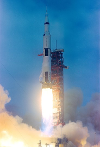 Launch date was May 18, 1969. Three days later, the spacecraft was in orbit around the Moon. The plan was always a full dress rehearsal, to do everything but land on the Moon. The crew did just that, paving the way for the historic July 20 landing. 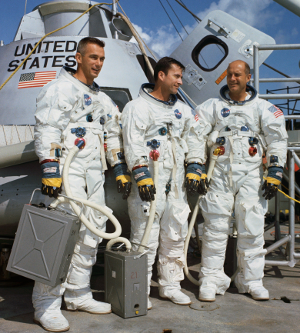
The crew of Apollo 10 were Commander Thomas Stafford, Command Module Pilot John Young, and Lunar Module Pilot Gene Cernan. The crew, all veterans of Project Gemini, named the Command Module Charlie Brown and the Lunar Module Snoopy, after characters in the Peanuts comic strip created by Charles M. Schulz. 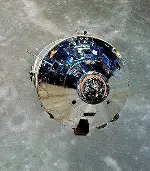
In the most critical test yet, Cernan and Stafford climbed into the Lunar Module and descended to less than 47,000 feet above the Moon. They made two passes over what would become the Sea of Tranquillity landing site for Apollo 11, tested all manner of systems–attitude control, communications, propulsion, and radar–and then successfully rejoined Young in the Command Module. The Lunar Module didn't have enough fuel to touch down and get back to rendezvous with the Command Module; so if Cernan and Stafford had tried to land on the Moon, they would have had to stay there. Various accounts of the mission in subsequent years had different reasons for why this was. Whatever the reason, 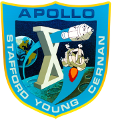
The crew had made the next mission possible. They had tested out every system that the next crew would need to employ, and all had worked within established parameters. As had been the case with previous missions, the technical glitches that they worked through (including a potentially deadly roll during the lunar module descent) gave NASA valuable information with which to plan for future challenges. The success of the mission gave NASA confidence that the next one could be as successful as it was planned to be. 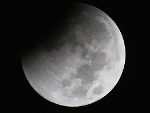
The Apollo 10 crew also took a large number of photos and compiled a large amount of color video footage–of spaceflight, of docking, of rendezvous, of the lunar surface, of the Earth. They also went on to more historic accomplishments: Young was the Commander of Apollo 16 and walked on the Moon, Cernan was Commander of Apollo 17 and walked on the Moon, and Stafford was Commander of the Apollo-Soyuz Test Project. |
|
Social Studies for Kids
copyright 2002–2025
David White



 the mission was to lay the groundwork for the next mission, to complete all the steps but one, and so the crew did as they were supposed to do. In the end, Snoopy, which was never supposed to come back, went into orbit around the Sun. To complete the success, they reignited the propulsion system and guided the spacecraft to Earth, splashing down safely on May 26 in the Pacific Ocean less than four miles from the target point.
the mission was to lay the groundwork for the next mission, to complete all the steps but one, and so the crew did as they were supposed to do. In the end, Snoopy, which was never supposed to come back, went into orbit around the Sun. To complete the success, they reignited the propulsion system and guided the spacecraft to Earth, splashing down safely on May 26 in the Pacific Ocean less than four miles from the target point.
